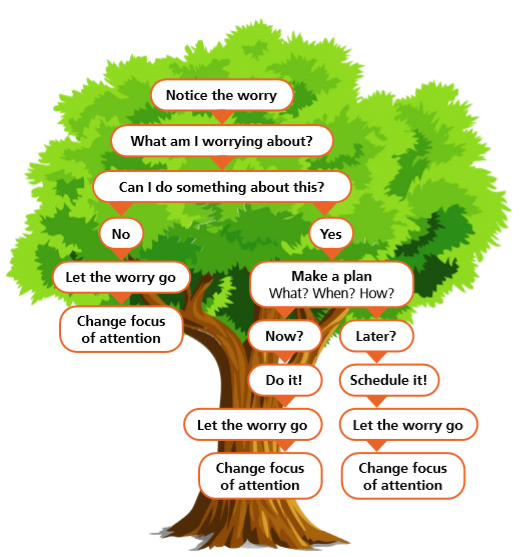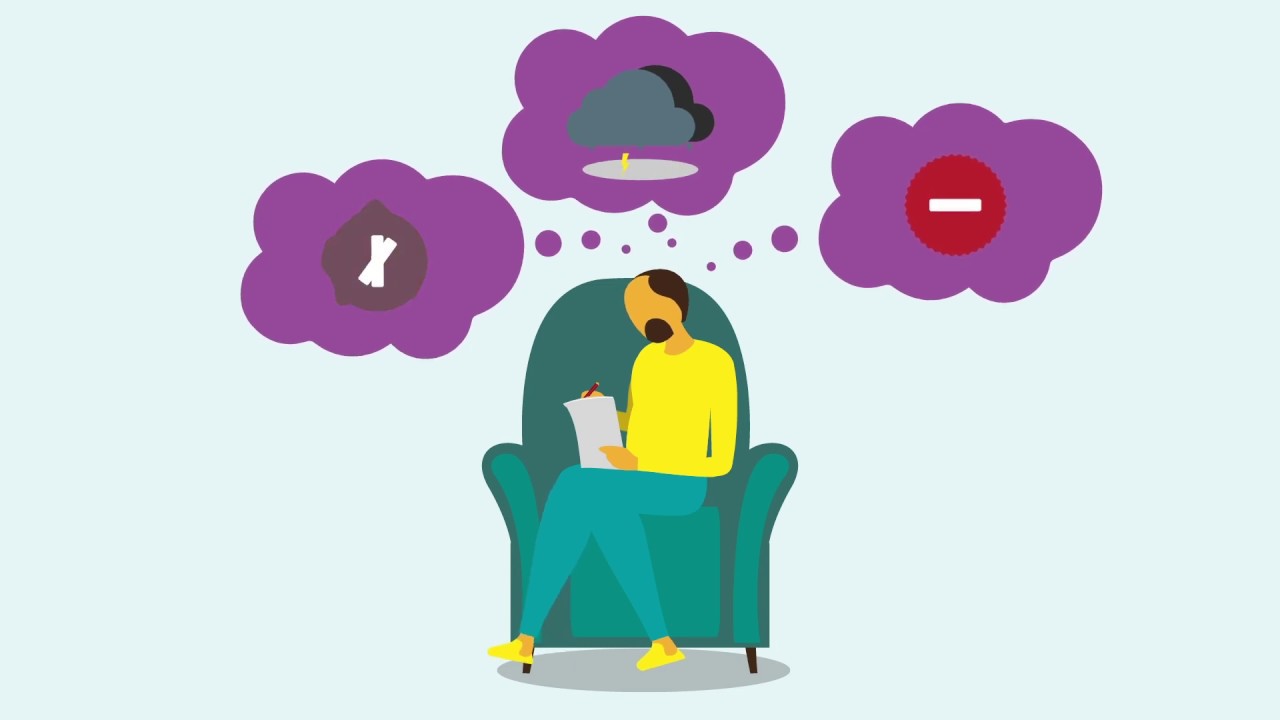Worry and Problem Solving

Worry is a feeling of unease or anxiety about something that may happen in the future. It involves thinking about potential problems or negative outcomes and can often lead to stress and overthinking. Worrying is a natural response to certain situations, but excessive worry (the medical term for which is Generalised Anxiety Disorder, or "GAD") can interfere with daily life and wellbeing. It is important to manage worry and find healthy ways to cope with it.
We frequently have as many as 50,000 thoughts every day. Research tells us that 85% of the things we worry about have a positive or neutral outcome. Of the 15% that have a negative outcome, 80% of people said they handled the situation much better than they thought they would.

How Worry affects us
Excessive worry can have several negative effects on daily life, including:-
1. Increased stress: Excessive worry can lead to heightened stress levels, which can affect both physical and mental health. It can result in symptoms such as headaches, muscle tension, difficulty sleeping, and digestive problems.
2. Impaired decision-making: When you are constantly worrying, it can cloud your judgment and make it difficult to make clear and rational decisions. This can affect various areas of life, such as work, relationships, and personal goals.
3. Reduced productivity: Excessive worry can be distracting and make it challenging to focus on tasks at hand. This can result in decreased productivity and difficulty meeting deadlines or accomplishing goals.
4. Strained relationships: Worrying excessively can cause you to become preoccupied with your own concerns, making it difficult to fully engage in relationships. It can lead to increased irritability, decreased empathy, and a lack of availability for emotional support.
5. Negative impact on physical health: Chronic worry has been linked to various physical health problems, including weakened immune system, high blood pressure, heart disease, and gastrointestinal issues.
6. Poor mental well-being: Excessive worry can contribute to feelings of anxiety, depression, and overall dissatisfaction with life. It can lead to a constant state of agitation, fear, and a diminished sense of happiness and well-being.
It is important to recognise the negative effects of excessive worry and seek appropriate support or strategies to manage it effectively.
How Can Therapy Help?
There are many ways to reduce our tendency to worry. As the video above describes one such way is for us to address the impact that our childhood or previous experiences may have had on the development of our attitude to risk and our ability to tolerate uncertainty in our lives.
Another way is for us to identify and challenge our beliefs about worry; people often carry deeply held beliefs about worry that keep them stuck repeating habitual patterns of thoughts and behaviour. You might, for example, believe that worry is necessary in order to keep yourself safe or to prevent bad things from happening to you or those you care about. You might even perceive that worry is necessary in order to prove that you care for others or to prepare you to cope better when the worst happens.
The danger with positive beliefs about worry is that the beliefs are negatively reinforced because the imagined feared event doesn't happen and we therefore don't discover that our beliefs are not true. Therapy can help to identify and challenge those beliefs.
Others have more negative beliefs about worry, that it's somehow uncontrollable, that worry might cause them to lose control or even "go crazy".
Therapy for Generalised Anxiety Disorder focuses on:-
- learning to differentiate between different kinds of worry
- challenging the unhelpful beliefs about worry (whether positive or negative)
- reducing worry by learning to set Worry Zones or Postpone worry and keeping a Worry Record
- developing problem solving skills
- increasing tolerance of uncertainty and the associated discomfort of anxiety
- learning to use attention training or mindfulness skills
If any of these difficulties are something that you're interested in exploring further then please contact me to discuss ways in which I'm able to help.
Self Help Strategies to Manage Worry
In the meantime you may wish to try the following widely used self help strategies in order to manage your day to day worries.

Problem Solving
One of the common and unfortunate side effects of excessive worry is that it can adversely impact our ability to focus on and/or to address actual problems which are often within our capacity to solve. The Worry Tree highlighted in the graphic and video above invite us to separate hypothetical problems (about which we have no control or influence) from actual practical problems which we can, and likely should, give our attention to.
Once we've identified a practical problem then adopting a simple yet systematic process to work through a plan of action can be an empowering strategy. After all, if we try and keep on top of those things which we can address then we're reducing the number of things that will occupy our thoughts later.
Perhaps try using a Problem Solving Worksheet such as the one below:-




